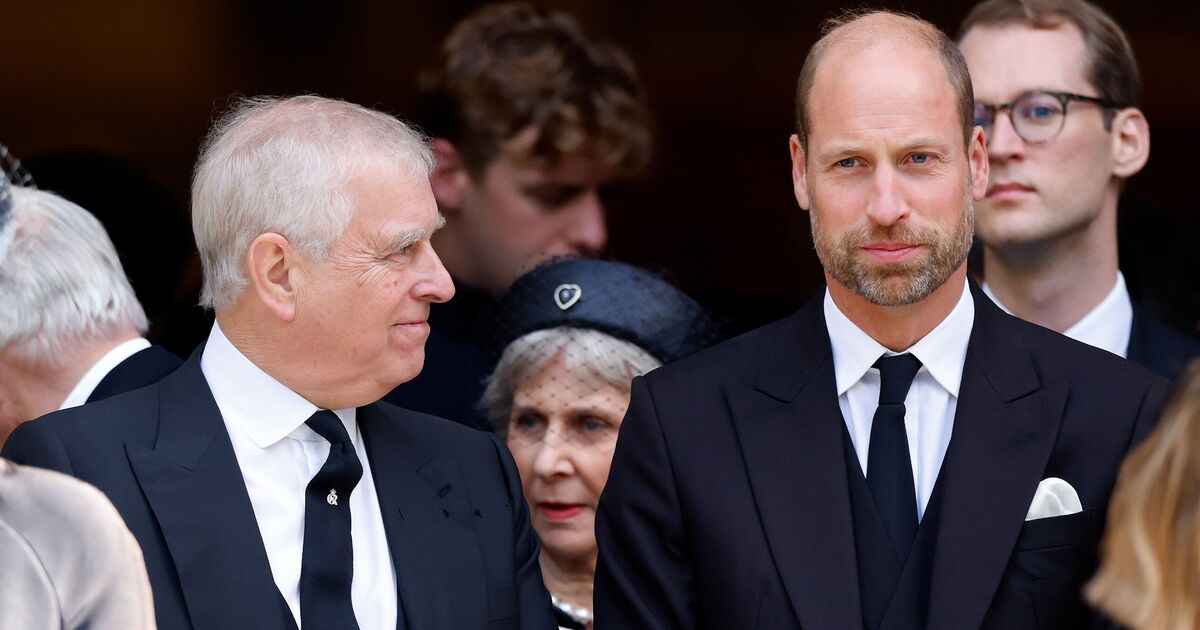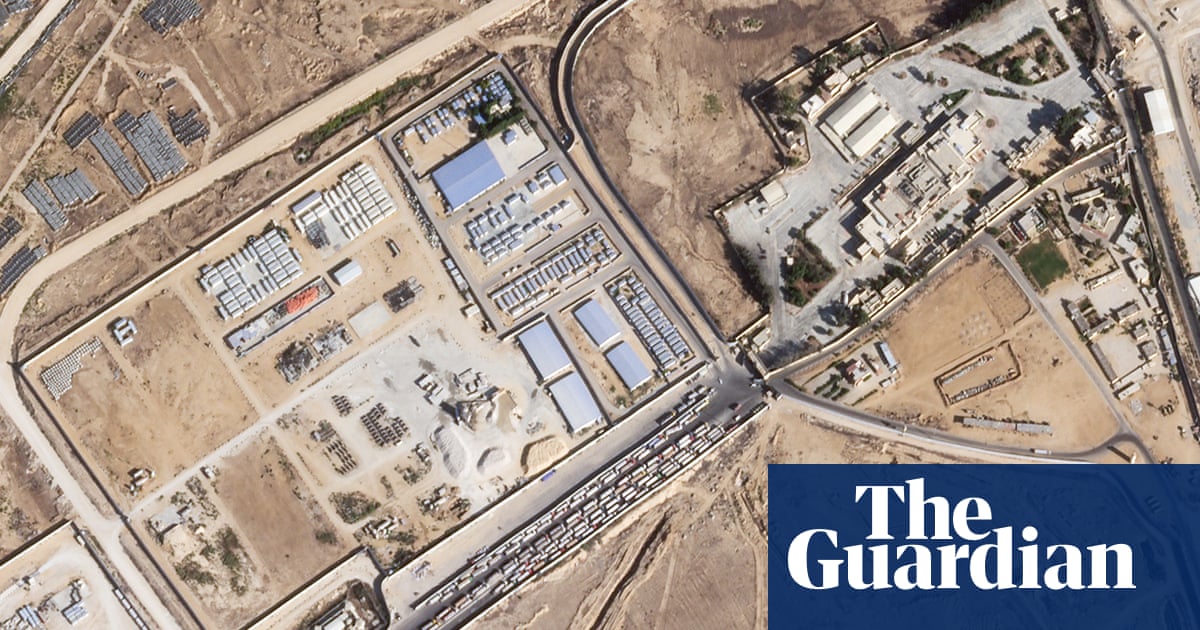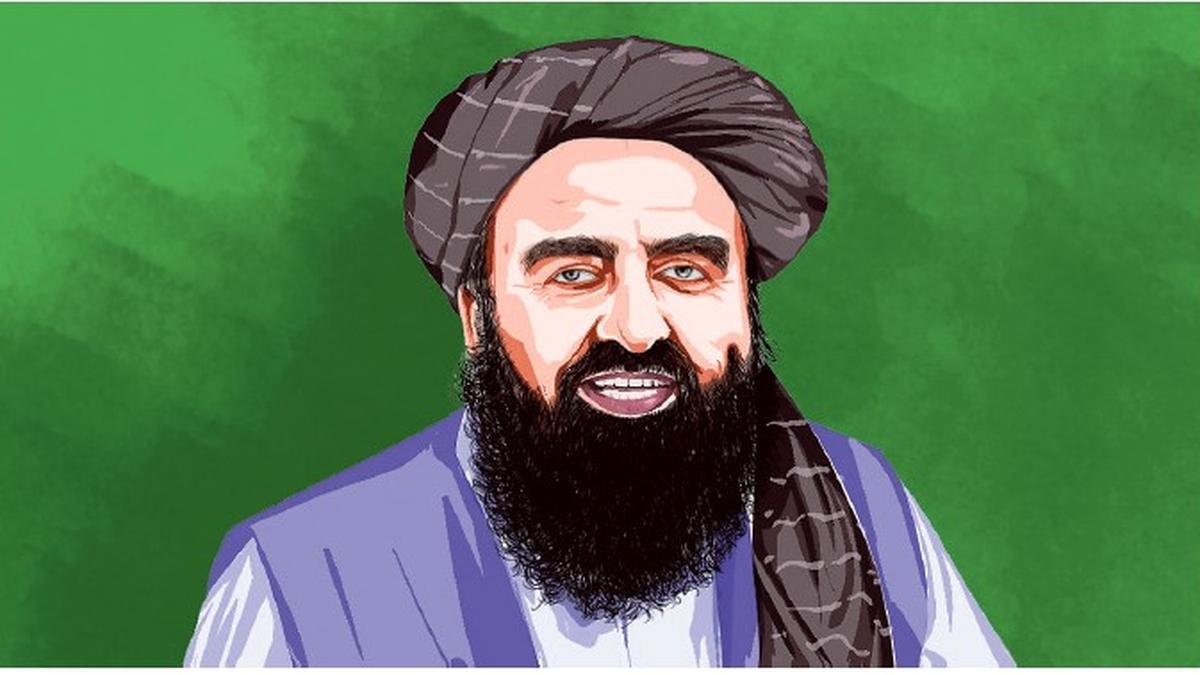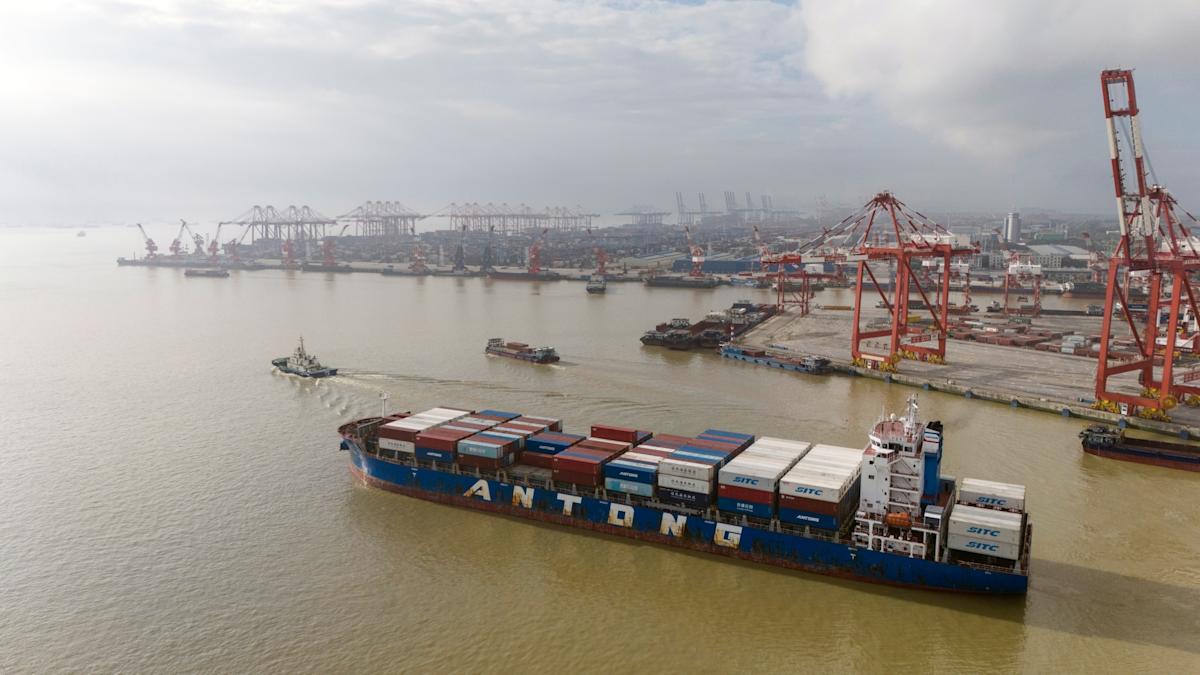Ousmane Dieng closed the preseason in Oklahoma City with a bang, splashing a game-winning 3 to net a Tissot Buzzer Beater.
On Tuesday, regular season Opening Night tips off in the same arena.
5 STORIES IN TODAY’S EDITION 🏀
Oct. 18,…

Ousmane Dieng closed the preseason in Oklahoma City with a bang, splashing a game-winning 3 to net a Tissot Buzzer Beater.
On Tuesday, regular season Opening Night tips off in the same arena.
Oct. 18,…

As reported by The Times, William “will be more ruthless” compared to his father King Charles.
Although involved in discussion, William is understood to have not been satisfied with the outcome and knows the “Andrew problem” will be “in his…

The Rafah border crossing between Gaza and Egypt will stay closed “until further notice”, Israel has said, after the Palestinian embassy in Cairo said the territory’s sole gateway to the outside world would reopen on Monday.
The statement by…

Visiting the Deoband Darul Uloom during his recent India tour, the Taliban’s Foreign Minister, Amir Khan Muttaqi, described the institution as “Madar e Ilmi”, or alma mater, which in a way provided a glimpse of Mr. Muttaqi’s evolution as…

Dancing with Ghosts follows the story of Mai, a 15-year-old Thai girl who is dealing with heavy emotions after the death of her parents. Through the grief, she finds it hard to find the joy in life until she learns to love it again…

Menopause has long been treated as a quiet, private ordeal. That silence carries a cost. On World Menopause Day, bringing menopause out of the shadows is not a niche concern but a public priority with tangible dividends for health, equity, and…

Consolidation therapy with tiragolumab plus atezolizumab (Tecentriq) failed to meet the primary end point of improving independent review facility (IRF)-assessed progression-free survival (PFS) vs standard durvalumab (Imfinzi) in patients with locally advanced, unresectable, stage III non–small cell lung cancer (NSCLC) that has not progressed after platinum-based concurrent chemoradiation (cCRT), according to findings from the phase 3 SKYSCRAPER-03 trial presented at the 2025 ESMO Congress.1
At a median follow-up of 30.7 months, the median IRF-PFS in the overall population was 14.2 month (95% CI, 12.6-19.2) in patients receiving the combination vs 13.8 months (95% CI, 10.9-17.0) in patients treated with durvalumab (HR, 1.00; 95% CI, 0.84-1.19). The 24-month PFS event-free rates were 39.0% and 38.5%, respectively. The median overall survival (OS) was 45.6 months (95% CI, 37.1–not evaluable [NE]) vs 45.8 months (95% CI, 36.9-NE), respectively (HR, 0.98; 95% CI, 0.80-1.20). The 24-month OS event-free rates were 67.0% vs 66.3%, respectively.
The primary end point was also missed in PD-L1–positive patients (Tumor Cell [TC] score ≥1%) with a median IRF-PFS of 19.4 months vs 16.6 months in patients treated with the combination vs durvalumab, respectively (HR, 0.96; 95% CI, 0.75-1.23; P = .7586). The median OS in these patients was NE vs 54.8 months, respectively (HR, 0.99; 95% CI, 0.73-1.34). The 24-month PFS and OS event-free survival rates were 46.1% vs 42.9% and 72.2% vs 69.2%, respectively.
“SKYSCRAPER-03 did not meet its primary end point of IRF-PFS. There were no new or unexpected [safety] findings,” said first study author Rafal Dziadziuszko, MD, PhD, department of oncology and radiotherapy of the Medical University of Gdansk, Poland.
“Tiragolumab plus atezolizumab demonstrated a tolerable safety profile, consistent with previous observations for the combination,” said Dziadziuszko.
Grade 3/4 treatment-related adverse events (TRAEs) occurred in 13.8% of patients in the combination arm, with serious TRAEs experienced by 11.5%. There were 2 patient deaths considered to be related to the combination treatment. In the durvalumab arm, grade 3/4 TRAEs and serious TRAEs each occurred in 10.7% of patients. There were 7 patient deaths considered to be related to durvalumab treatment.
Regarding the rationale for the study, Dziadziuszko explained, “Consolidation durvalumab is the standard of care for patients with unresectable, stage III NSCLC that has not progressed following cCRT; however, disease recurrence [still] represents an unmet need.”
He added that the immune checkpoint target TIGIT has a role in cancer immune evasion and the study hypothesis was that tiragolumab, an anti-TIGIT monoclonal antibody, could potentially augment antitumor activity when used in combination with immunotherapies such atezolizumab.
The open-label phase 3 SKYSCRAPER-03 trial was launched to test this hypothesis in patients with newly diagnosed, unresectable, stage III NSCLC whose disease has not progressed following at least 2 cycles of definitive platinum-based cCRT. Patients had to have known PD-L1 status, and an ECOG performance status of 0 or 1. Patients with EGFR– or ALK-positive tumors were not eligible for enrollment.
At 1 to 42 days post cCRT, patients were randomized in a 1 to 1 ratio to combination therapy with tiragolumab (840 mg IV every 4 weeks) plus atezolizumab (1680 mg IV every 4 weeks) or single-agent durvalumab (10 mg/kg IV every 2 weeks or 1500 mg IV every 4 weeks). Patient could receive up to 13 cycles of treatment (28-day cycles).
The primary end point was PFS assessed by an independent review facility in patients with PD-L1–positive (Tumor Cell [TC] score ≥1%) as well as PD-L1 all-comers. Secondary end points included OS, duration of response, objective response rate, patient-reported outcomes, and safety.
Patient characteristics were well balanced between the 2 study arms. The median age was 64 years (range, 35-84) in the combination arm vs 65 years (range, 41-86) in the durvalumab arm. About half of patients in each arm were aged less than 65 years at 50.8% and 47.4%, respectively. About 80% of patients in each arm were male, about 60% were White, and about 35% were Asian. Patients’ ECOG performance status was mostly split evenly between 0 and 1, with a slightly higher number of patients in each arm at ECOG 1 status. About 75% of patients in each arm were former tobacco users and about 20% were current tobacco users.
About 50% of patients in each arm had a PD-L1 TC score of <1%, with about 25% of patients having a score of 1%-49%, and the remaining patients having a score of ≥50%. Tumor staging prior to definitive cCRT showed that 41.1% of patients receiving the combination had stage IIIA tumors vs 39.6% of patients in the single-agent arm. Rates of stage IIIB and stage IIIC tumors were 47.4% vs 44.4% and 11.4% vs 16.0%, respectively. About 60% of patients in each arm had squamous histology and about 40% had non-squamous histology. Best response to concurrent chemoradiotherapy in the combination vs durvalumab arms was complete response (0.5% in each arm), partial response (59.7% vs 61.4%), and stable disease (39.8% vs 38.1%).
In his concluding remarks, Dziadziuszko did not report any next steps for the combination of tiragolumab plus atezolizumab in this setting.
Disclosures
Dziadziuszko disclosed relationships with AstraZeneca, Boehringer Ingelheim, BMS, Pfizer, Takeda, Eli Lilly, BioNTech, Novartis, and Roche.
Reference
1. Dziadziuszko R, Ahn M-J, Bradley JD, et al. SKYSCRAPER-03: Phase III, open-label, randomised study of atezolizumab (atezo) + tiragolumab (tira) vs durvalumab (durva) in locally advanced, unresectable, stage III non-small cell lung cancer (NSCLC) after platinum-based concurrent chemoradiation (cCRT). Presented at: 2025 ESMO Congress; October 17-21, 2025; Berlin, Germany. Abstract LBA69.

“Big frustration,” said Hulkenberg reflecting on that moment. “All the good work from yesterday was put in the bin. We lost another front wing, which is also very annoying.”
Although Hulkenberg was able to continue following a pit stop…

ECDC, in collaboration with EACS (the European AIDS Clinical Society), is developing modules of HIV care standards to improve service access and quality. The pre-exposure prophylaxis (PrEP) Standards of Care module was among the first developed….

An Antong Holdings Co. container ship at the Port of Nansha in Guangzhou, China.
(Bloomberg) — China’s economy probably grew at the slowest in a year during the third quarter despite a boom in exports, in a disconnect the Communist Party may move to rectify at a key meeting in the coming week.
Most Read from Bloomberg
As trade tensions escalate with the US, weakness in investment, industrial output and retail sales is undermining momentum from record sales abroad. Data due on Monday from China’s National Bureau of Statistics will show gross domestic product rose 4.7% in the quarter from a year earlier, according to the median estimate in a Bloomberg survey, down from 5.2% in the prior three months.
Retail sales are forecast to have expanded 3% in September and industrial output to have climbed by 5% — the weakest outcomes this year for both.
Meanwhile, fixed-asset investment is forecast to have slowed again in the first nine months, to be unchanged from a year earlier. It’s been plunging since May despite a massive expansion in government borrowing meant to support the spending power of local authorities. Public spending on infrastructure hasn’t been enough, though, to make up for a slump in housing investment and the slowdown in money going to manufacturing.
Foreign firms have also been pulling back on outlays, with inbound new foreign direct investment down almost 13% in the first eight months, putting China on track for three straight years of declines. One bright spot is foreign demand, with the goods trade balance so far this year hitting a record $875 billion, according to the latest figures.
The economic fragility sets the tone for the upcoming gathering of party officials at the so-called fourth plenum in Beijing. The huddle will provide clues on their priorities for 2026-2030, as governments and investors around the world call for a rebalancing of China’s economy toward domestic consumption.
What Bloomberg Economics Says:
“Beijing now faces deep structural headwinds — from fading growth drivers to a protracted property downturn and entrenched deflation — unlike the severe, yet temporary pandemic shocks during the last five-year planning stage. With the US ratcheting up trade and tech restrictions, the external environment has also turned sharply adverse. This time, the transition is no longer a distant goal — it’s imperative.”